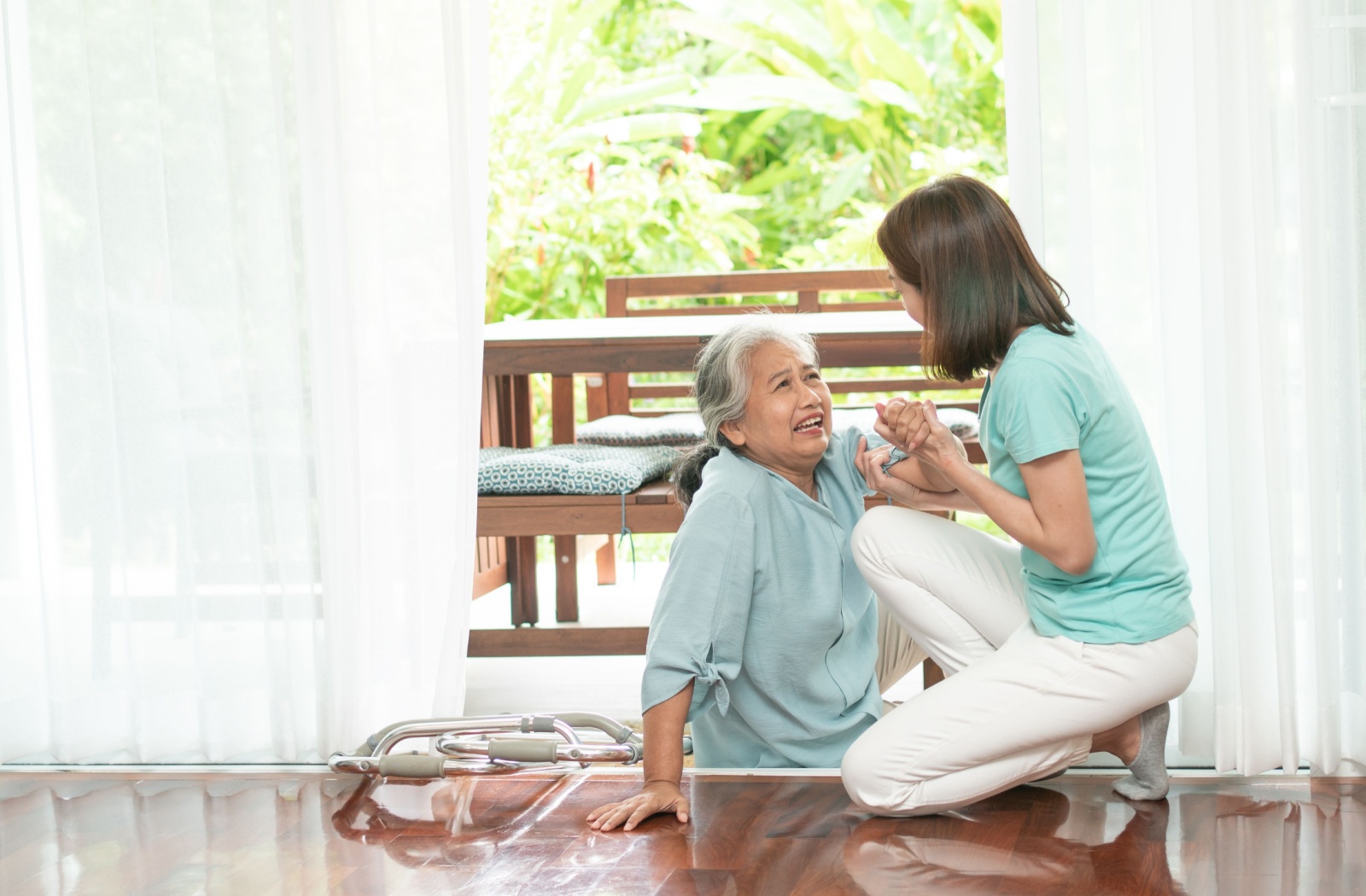Experiencing a fall can be a traumatic event for anyone, especially for seniors. Knowing what to do after a senior falls is crucial not only for their immediate safety but also for their long-term well-being. Falls are quite common among older adults, and the aftermath can range from minor injuries to severe medical complications. In this article, we will explore the vital steps to take when a senior falls, ensuring both safety and a path to recovery.

Understanding the Impact of Falls in Seniors
Falls are a leading cause of injury among older adults. According to studies, one in four seniors experiences a fall each year. These incidents can lead to serious injuries, such as hip fractures and head trauma, and can significantly affect their quality of life. Recognizing the potential consequences of a fall is the first step in addressing the situation effectively.
Immediate Actions to Take After a Senior Falls
1. Stay Calm and Assess the Situation
It’s important to remain calm and composed. Assess whether the senior is conscious and check for any visible injuries. Avoid moving them unless it’s absolutely necessary.
2. Check for Injuries
Look for signs of injury, such as bruising, swelling, or bleeding. Ask the senior if they feel any pain or discomfort. It’s crucial to identify any potential injuries promptly.
3. Call for Help if Necessary
If the senior is injured or unable to get up, call for medical assistance immediately. Even if injuries seem minor, it’s best to consult a healthcare professional to rule out any underlying issues.
4. Provide Comfort and Support
Offer reassurance and support to the senior. Keep them warm and comfortable while waiting for help to arrive.
Helping a Senior Stand Up Safely
5. Assess Their Physical Condition
Before assisting a senior in getting up, ensure they are not in significant pain and do not have severe injuries. If they appear capable, proceed cautiously.
6. Use the Proper Technique
Guide the senior to roll onto their side, then onto their hands and knees. Have a sturdy surface nearby, like a chair, to help them stand. Assist gently and avoid pulling or lifting abruptly.
Post-Fall Precautions and Actions
7. Monitor for Delayed Symptoms
After a fall, some symptoms may not be immediately apparent. Watch for signs of dizziness, confusion, or difficulty walking, and seek medical attention if needed.
8. Schedule a Medical Evaluation
Even if the fall seems minor, it’s advisable to have a healthcare professional evaluate the senior’s condition. They can provide guidance on any necessary treatments or therapies.
9. Review Medications
Certain medications can increase the risk of falls due to side effects like dizziness or drowsiness. Consult with a doctor to review any medications the senior is taking.
Preventing Future Falls
10. Conduct a Home Safety Assessment
Ensure the home environment is safe by removing tripping hazards, installing grab bars, and improving lighting. This is an essential step in preventing future falls.
11. Encourage Regular Exercise
Engaging in regular physical activity can help improve balance, strength, and flexibility, reducing the risk of falls. Activities like walking, tai chi, and gentle yoga are excellent options.
12. Educate on Fall Prevention
Teach seniors about the importance of fall prevention and encourage them to wear appropriate footwear, use assistive devices if needed, and remain active.
The Role of Technology in Fall Prevention
13. Utilize Smartwatches
Smartwatches can be valuable tools in fall detection and prevention. They can alert caregivers in case of a fall and even monitor vital signs. You can learn more about choosing a smartwatch for seniors from trusted sources.
14. Voice Assistants for Safety
Voice-activated devices can help seniors call for help easily if they experience a fall. They provide peace of mind and quick access to emergency services.
15. Explore Budget-Friendly Options
There are many affordable options available for fall detection technology. It’s worth exploring budget-friendly smartwatches to find the best fit.
Conclusion
Knowing what to do after a senior falls is essential for ensuring their safety and well-being. By taking immediate action, seeking medical evaluation, and implementing preventive measures, we can help reduce the risk of future falls. Remember, being prepared and informed can make all the difference in supporting our loved ones as they age.

FAQs
1. What should I do immediately after a senior falls?
Stay calm, assess the situation, and check for injuries. If necessary, call for medical assistance.
2. How can I help a senior stand up safely after a fall?
Ensure they are not injured, then guide them to roll onto their side and onto their hands and knees, using a sturdy surface for support.
3. What are some ways to prevent future falls in seniors?
Conduct a home safety assessment, encourage regular exercise, and consider using fall detection technology like voice assistants and smartwatches.
For more detailed information on fall prevention and recovery, you can visit the National Institute on Aging website.
This article contains affiliate links. We may earn a commission at no extra cost to you.

